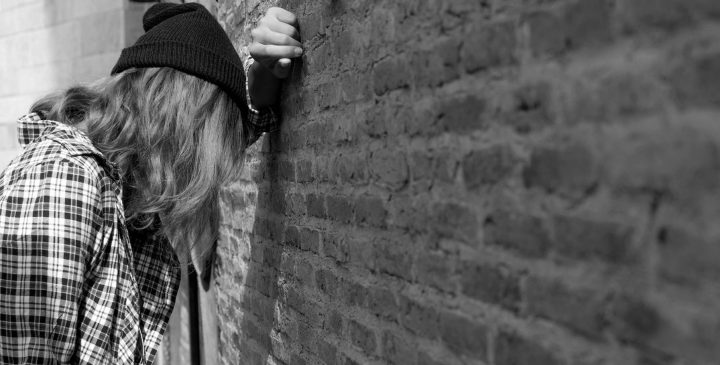MENTAL HEALTH
Gauteng Education Department launches ‘action plan’ after increase in learner suicides

The high rate of suicide in Gauteng schools — with 40 learners reported to have taken their lives since the beginning of the year — is part of a broader trend of increased mental health challenges among young people. Experts have advocated for an intersectoral approach to ensuring early intervention for children and adolescents with mental health needs.
In recent months, an increase in school learner suicides in Gauteng has raised concerns about child and adolescent mental health in the province. On Sunday, 10 September — World Suicide Prevention Day — Gauteng Education MEC Matome Chiloane announced an “action plan” to address the high rate of learner suicides, stating that too many young lives had been lost.
Numbers released by the Gauteng Education Department showed that of the 300 learner deaths in the province since the beginning of the 2023 academic year, 40 were alleged suicides. One of the most recent incidents involved an 11-year-old girl from a primary school in Brakpan, Ekurhuleni Municipality, who died by suicide on Friday, 8 September.
“We are aware that the deaths have had a massive psychological impact on our learners, teachers and the greater schooling community. It is, therefore, imperative that, in the immediate, we provide support to those affected and, in the long term, we respond with lasting solutions which can help turn the situation around,” stated the department.
Read more in Daily Maverick: Openness and connection are the missing links in young people’s mental health struggles

The South African Society of Psychiatrists (Sasop) secretary, Alicia Porter, told Daily Maverick the high rate of learner suicides was not unique to Gauteng, but rather the manifestation of a global trend of increased suicides in the 15-24 age group.
“Suicide is now the second leading cause of death in this age group — second only to … motor vehicle accidents and traumatic loss of life,” she said.
“The trend is in keeping with the increased rates of mental health problems. While I’m with Sasop, I’m also a child and adolescent psychiatrist … so, what we’ve seen is an increase in mental health conditions in children, and it’s actually the common mental health problems like anxiety, depression, post-traumatic stress.
“When I look at the suicide rate increasing, that tells me there is a lot more untreated depression, anxiety and PTSD out there… What we really need is a mental health intervention … rather than just looking at suicide rates in isolation.”
Daily Maverick asked other provincial education departments about the issue of suicide among school learners, but only three had responded at the time of publishing. The Eastern Cape reported 41 suicide deaths in schools and 43 cases of attempted suicide between January and August. The Western Cape Education Department reported two cases of suicide, while the Northern Cape Education Department said there had been three suicides and two cases of attempted suicide.
Action plan
The Gauteng Education Department’s action plan involves collaboration with various organisations, including the Matthew Goniwe School of Leadership and Governance, the South African Depression and Anxiety Group (Sadag), Childline, the Teddy Bear Foundation and the National Association of Child Care Workers.
Sadag, a mental health support and advocacy nonprofit, holds talks on mental health in schools across Gauteng. Its operations director, Cassey Chambers, said that every one of the 17 schools the organisation had visited in recent weeks had reported a recent suicide or attempted suicide.
“It should always be alarming if we hear of any teen suicides, and especially so many in a short space of time. We’ve been working in different schools from different districts where we’re trying to identify what the key issues are … [and] what kind of referral pathways are in place for support services,” she said.
Sadag has identified four main contributing factors in the learner suicide cases it’s encountered: family problems, including abuse, substance use, gender-based violence or family separations; trauma, such as sexual assault, abuse or witnessing traumatic events; bullying; and depression.
“It’s been really, really heartbreaking, the combination of problems that [the learners] are dealing with… You would assume that school would be the safe haven, but sometimes that could be where they’re experiencing bullying … and there’s just no safe space in the communities for these young people,” Chambers said.
While Sadag has worked alongside the Gauteng Education Department for some time, the new partnership will provide the nonprofit with greater access to the department’s school-based support teams, as well as financial resources to visit more schools.
“It should be an ongoing project — it’s not just a once-off, going to a school and you’re done. That’s just the start of the conversation, the start of the support. We’re now needing to build on that,” Chambers said.
According to the department, some of the interventions it is rolling out with its partners include:
- Deploying 500 “learner support agents” to provide an early warning mechanism and give peer counselling for 1,200 schools;
- Allocating an additional 120 social workers to assist with risk assessment of learners; and
- Sending 500 Ke Moja coaches to assist with substance abuse awareness.
Mental health interventions for schools vary between provinces. In the Eastern Cape, the education department reported that it had responded to the need for more psychosocial support for learners by increasing the number of district social workers from 49 to 98.
The Western Cape Education Department has a “Safe Schools hotline” for those in need of mental health support, and supplements the services provided by department-employed psychologists and social workers with intersectoral cooperation involving the provincial departments of health and social development, as well as certain nonprofits.
In the Northern Cape, the education department has trained 40 educators on suicide and learners’ mental health, with 30 more educators due to receive training in the near future.
Systemic problems
One of the systemic issues underlying poor mental health outcomes for children and adolescents is the lack of awareness and understanding in communities that children can have mental health issues, according to Porter.
“[Their behaviour] is often dismissed as just normal adolescence [or] just naughty children… With children and adolescents, they have to wait for an adult in their lives or somebody to notice that there’s a problem because they don’t necessarily … articulate how they’re feeling, and then they’re not going to take themselves to the hospital. They have to kind of wait for somebody to notice that they’re not okay,” she explained.
Read more in Daily Maverick: Child and adolescent mental health services are in crisis, says report – this is what the Health Department aims to do about it
Another challenge is the lack of resources for child and adolescent mental health. Working with children is a highly specialised field and Porter pointed out that there were fewer than 50 child psychiatrists in South Africa.
“[In] the public and the private sectors, there’s a lack of human resources but there’s also just a lack of resources in terms of specialised units of care for these children … and so even those who can access care struggle because there aren’t enough facilities that are set up to deal with children’s mental health,” she explained.
Porter advocated for an intersectoral approach to learners’ mental health, involving the family, school and state systems. With early screening and detection mechanisms for children, care could become more about prevention than crisis intervention.
Chambers encouraged caregivers to start conversations about mental health with their children and normalise talking about serious topics. Where issues emerged, brainstorming solutions could then happen together.
“It’s really just validating and taking what they’re feeling seriously … and helping them to troubleshoot these different issues in their life,” she said.
“As a parent or any person that works with young people, it’s [important] to know the warning signs for suicide and even for depression. If you know the warning signs to look out for [regarding] depression, you can actually get the help before it’s too late. And if you know what signs to look out for [regarding] suicide, then you’re able to get that person crisis intervention and potentially save their life.” DM
Suicide Crisis Helpline – 080 056 7567
Substance Abuse Helpline – 080 012 1314
Cipla Mental Health Helpline – 080 045 6789
Cipla WhatsApp Chatline – 076 882 2775; SMS line – 31393


















 Become an Insider
Become an Insider
Comments - Please login in order to comment.